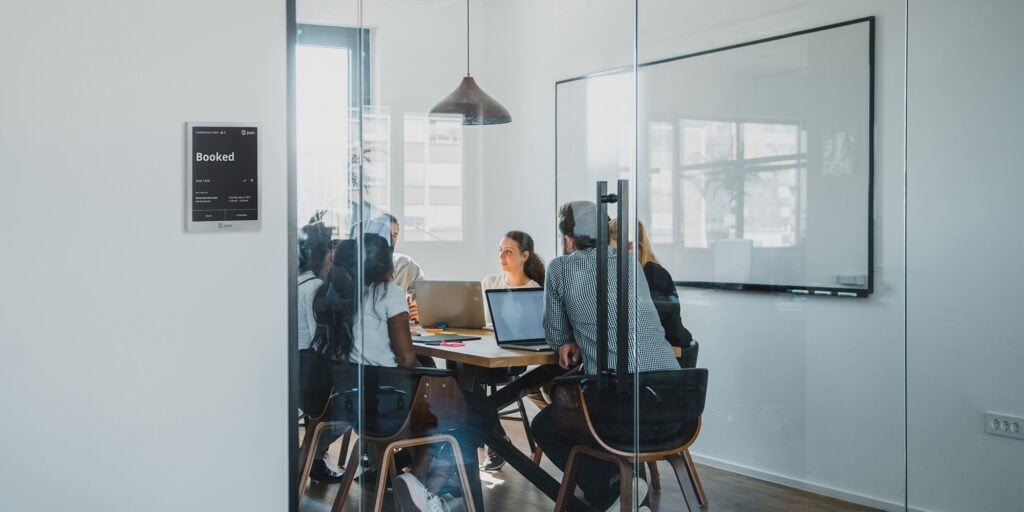What Is A Meeting Check-in?
The key to a well-oiled workforce is regular communication between all relevant members. It’s important for everyone to have the opportunity to provide updates, ask questions, express difficulties, and more.
As a manager or team leader, this is something that you need to prioritize on a daily or weekly basis. And a great way to do this is through regular meeting check-ins. Keep reading to find out what meeting check-ins are and how to implement them.
What Is A Meeting Check-in?
A meeting check-in is a regular meeting, either in-person or virtually, between all key members of a particular team or department. These can be held daily, weekly, or less frequently, depending on the needs of the workforce. You could also incorporate check-ins into your regular meetings by setting aside a little time at the beginning or the end of each meeting.
During these check-ins, each employee has the chance to share updates on what they are working on, provide feedback, and/or ask for advice or assistance. This helps employees and managers get a sense of what others are working on and how the project as a whole is progressing.
Another element of a meeting check-in is the personal well-being of employees. Giving them the space to openly discuss their challenges, and how they are coping with the current work, allows them to offload any negative thoughts or experiences. As a result, it gives you a sense of how the employees are doing (and how you might assist).

Why Have Meeting Check-ins?
Check-in meetings are important to host regularly because they:
- Enable the team to keep track of how a project or workload is progressing across the board
- Give you insight into how employees are coping with their work so that you may assist with any issues
- Allow you to monitor projects or tasks closely to ensure that everything is moving according to schedule
In addition, regular check-ins can help improve the quality of work being done. You can provide your employees with regular feedback at every step, which ensures they stay on the right track. It also allows you to make necessary changes/adjustments in areas of concern before problems snowball.
On a personal level, these meetings enable you to keep a careful eye on the mental, physical, and emotional well-being of team members.
By showing a continuous interest in employees and how they are coping, you provide a supportive environment. This encourages them to be transparent about any challenges they may be facing, which then enables them to get assistance when needed.
Tips For Successful Meeting Check-ins
Now that you are familiar with what meeting check-ins are, here are a few ideas to incorporate into your regular meetings to ensure you are making the most of your meeting time.
Set A Time Limit
Before starting a meeting check-in, it is important to establish a time limit so that it does not run over. You don’t want to delay other meetings or cut into the time that employees need to complete their deadlines for the day.
The time will depend on how frequently these meetings take place and how many members are on the team. You want to allow everyone a chance to speak, so estimate by allocating a small period for every employee (e.g. five minutes per person), as well as time for introductions and conclusions.
For monthly or bi-weekly meetings, you may want to allocate 2+ hours for a meeting. For weekly or daily meetings, an hour should suffice.
Make the time constraints known at the start and let employees know roughly how long each person has to discuss their work.
Ask Personal Questions
Try not to make the meetings a work-only discussion.
Encourage employees to share how they are doing, or any personal news or updates they would like to share with their work progress.
This makes employees feel more at ease and comfortable sharing personal achievements or challenges that they are facing.
Start With Fun Icebreakers
To keep the meeting light and casual, you can begin with a brief icebreaker session to warm everyone up before getting into the agenda.
An example would be asking each employee to share a TV show, movie, podcast, or song/album that they enjoyed over the weekend. This may spark discussions or showcase similarities between team members, which helps to strengthen bonds.
Another idea is getting each employee to share three highlights and three lowlights of their week. This gets them to reflect and vocalize their experiences and makes the other employees feel less alone in what they are going through with their work.
Leave With A Path Forward
After everyone has shared their updates and progress, it is important to end the meeting with some sense of what needs to happen next.
This can be a goal set out for each person to achieve by the next meeting or a general idea of what the team needs to do more or less going forward.
A good approach would be to ask each person to end their update with what they plan to achieve or complete by the next meeting or another specified date.
Balance Work And Wellbeing
You can make these meetings a balanced combination of professional and personal check-ins.
This can be done by encouraging employees to update the rest of the team on their well-being, together with their work progress. Or, you can split the meeting to allow a designated time for work talk and a designated time to discuss mental and emotional health.
What to Include in a Check-in Meeting
When managers hold check-in meetings, it’s crucial to include key elements to ensure effectiveness:
- Discuss Team Progress: Start by reviewing progress on current projects and individual contributions, ensuring everyone is aligned with the team’s goals and tasks.
- Understand Employee Mood: Incorporate questions about employees’ mood and feelings to enhance engagement and build a positive culture.
- Evaluate Workload and Contributions: Ask direct questions to gauge how teammates feel about their workload and their impact on team objectives.
- Highlight Company Updates: Share relevant company updates and how they integrate with the team’s ongoing efforts.
- Address Roadblocks: Identify any obstacles that need resolution to maintain productivity.
- Develop Skills: Discuss any missing skills that could be developed for better outcomes.
- Encourage Open-Ended Questions: Use open-ended questions to foster genuine conversation and make employees feel valued.
- Monitor Team Mood: Regularly check in on the mood of the group, considering the company’s culture.
Reflect on these points daily to maintain momentum and ensure your check-in meetings are more effective and aligned with project goals.

Conclusion
Communication is key in any workplace, making regular meetings that center around progress and well-being a must within teams.
This is a fantastic way to stay updated on how projects are going, and how each employee is doing. As a result, you can gain better insight into how your team is progressing and where you may need to provide some extra guidance or resources.
With a system like Joan, setting up meetings is a breeze. You can easily schedule a meeting, invite participants, and book a room in just a few minutes! Get in touch with us today to find out more.
Frequently Asked Questions
Regardless of the name, the purpose of a meeting check-in is generally to establish a connection between the participants, set a positive tone for the meeting, and align everyone around the meeting goals. This can involve sharing updates on current projects, sharing personal or professional goals, expressing concerns or feedback, or simply acknowledging the presence of other participants or confirming the room occupancy. Joan Room booking solution covers that part smoothly. By doing so, meeting check-ins help to create a more collaborative and productive meeting environment.
The purpose of checking in to a meeting is to confirm your attendance and align yourself with the meeting’s goals.
The check-in function on Joan room booking serves two purposes – it confirms the room occupancy or releases the room if no one shows up for the reserved meeting.
When a meeting is scheduled through Joan, the room is automatically reserved for the designated time. However, it is not always clear whether the meeting takes place. The check-in function is designed to address this ambiguity by allowing meeting attendees to confirm their presence at the reserved room.
If the meeting is scheduled, the check-in function helps ensure that the room is occupied and used as intended. This can be useful in shared office spaces or other environments where meeting rooms are in high demand and scheduling conflicts can occur.
On the other hand, if no one shows up for the reserved meeting, the check-in function can help to release the room for other potential users. This prevents the room from being left unoccupied and wasted and allows others to utilize the space if it becomes available.
The purpose of meeting check-ins is to confirm attendance and align with the meeting’s goals. Joan’s check-in feature confirms room occupancy for reserved meetings or releases the room for others to use if no one shows up, improving space utilization. This can be particularly useful in shared office spaces or other settings where meeting rooms are in high demand and scheduling conflicts can arise.
A check-in activity is a quick and informal process that takes place at the start of a meeting or group session to create a sense of connection and establish a positive tone. Participants share a few words about their feelings or thoughts to build trust and strengthen relationships. The goal is to help everyone feel seen and heard while aligning the group and increasing engagement.
Regularly checking in with colleagues is crucial for fostering communication, trust, and collaboration in the workplace. It can improve team performance, identify potential issues, and promote work-life balance. Overall, it is an essential aspect of building successful professional relationships and a positive work culture.
With Joan room schedulers you can also check in to the meeting room, confirming your meeting will actually take place in the room. If you don’t chack in to a meeting, the room will be released and make available for others.